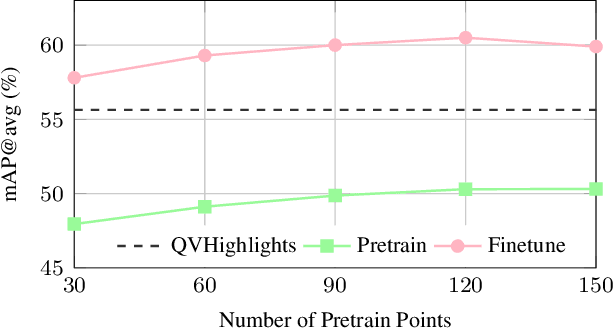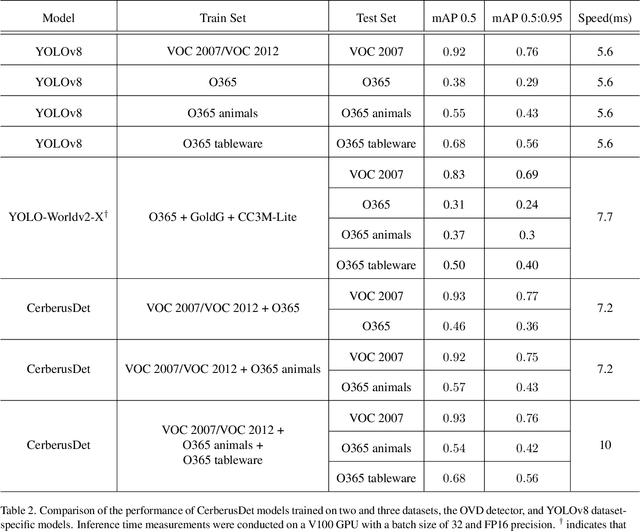Maksim Kuprashevich
NoHumansRequired: Autonomous High-Quality Image Editing Triplet Mining
Jul 18, 2025Abstract:Recent advances in generative modeling enable image editing assistants that follow natural language instructions without additional user input. Their supervised training requires millions of triplets: original image, instruction, edited image. Yet mining pixel-accurate examples is hard. Each edit must affect only prompt-specified regions, preserve stylistic coherence, respect physical plausibility, and retain visual appeal. The lack of robust automated edit-quality metrics hinders reliable automation at scale. We present an automated, modular pipeline that mines high-fidelity triplets across domains, resolutions, instruction complexities, and styles. Built on public generative models and running without human intervention, our system uses a task-tuned Gemini validator to score instruction adherence and aesthetics directly, removing any need for segmentation or grounding models. Inversion and compositional bootstrapping enlarge the mined set by approximately 2.2x, enabling large-scale high-fidelity training data. By automating the most repetitive annotation steps, the approach allows a new scale of training without human labeling effort. To democratize research in this resource-intensive area, we release NHR-Edit: an open dataset of 358k high-quality triplets. In the largest cross-dataset evaluation, it surpasses all public alternatives. We also release Bagel-NHR-Edit, an open-source fine-tuned Bagel model, which achieves state-of-the-art metrics in our experiments.
GigaCheck: Detecting LLM-generated Content
Oct 31, 2024



Abstract:With the increasing quality and spread of LLM-based assistants, the amount of artificially generated content is growing rapidly. In many cases and tasks, such texts are already indistinguishable from those written by humans, and the quality of generation tends to only increase. At the same time, detection methods are developing more slowly, making it challenging to prevent misuse of these technologies. In this work, we investigate the task of generated text detection by proposing the GigaCheck. Our research explores two approaches: (i) distinguishing human-written texts from LLM-generated ones, and (ii) detecting LLM-generated intervals in Human-Machine collaborative texts. For the first task, our approach utilizes a general-purpose LLM, leveraging its extensive language abilities to fine-tune efficiently for the downstream task of LLM-generated text detection, achieving high performance even with limited data. For the second task, we propose a novel approach that combines computer vision and natural language processing techniques. Specifically, we use a fine-tuned general-purpose LLM in conjunction with a DETR-like detection model, adapted from computer vision, to localize artificially generated intervals within text. We evaluate the GigaCheck on five classification datasets with English texts and three datasets designed for Human-Machine collaborative text analysis. Our results demonstrate that GigaCheck outperforms previous methods, even in out-of-distribution settings, establishing a strong baseline across all datasets.
Saliency-Guided DETR for Moment Retrieval and Highlight Detection
Oct 02, 2024



Abstract:Existing approaches for video moment retrieval and highlight detection are not able to align text and video features efficiently, resulting in unsatisfying performance and limited production usage. To address this, we propose a novel architecture that utilizes recent foundational video models designed for such alignment. Combined with the introduced Saliency-Guided Cross Attention mechanism and a hybrid DETR architecture, our approach significantly enhances performance in both moment retrieval and highlight detection tasks. For even better improvement, we developed InterVid-MR, a large-scale and high-quality dataset for pretraining. Using it, our architecture achieves state-of-the-art results on the QVHighlights, Charades-STA and TACoS benchmarks. The proposed approach provides an efficient and scalable solution for both zero-shot and fine-tuning scenarios in video-language tasks.
CerberusDet: Unified Multi-Task Object Detection
Jul 17, 2024



Abstract:Object detection is a core task in computer vision. Over the years, the development of numerous models has significantly enhanced performance. However, these conventional models are usually limited by the data on which they were trained and by the category logic they define. With the recent rise of Language-Visual Models, new methods have emerged that are not restricted to these fixed categories. Despite their flexibility, such Open Vocabulary detection models still fall short in accuracy compared to traditional models with fixed classes. At the same time, more accurate data-specific models face challenges when there is a need to extend classes or merge different datasets for training. The latter often cannot be combined due to different logics or conflicting class definitions, making it difficult to improve a model without compromising its performance. In this paper, we introduce CerberusDet, a framework with a multi-headed model designed for handling multiple object detection tasks. Proposed model is built on the YOLO architecture and efficiently shares visual features from both backbone and neck components, while maintaining separate task heads. This approach allows CerberusDet to perform very efficiently while still delivering optimal results. We evaluated the model on the PASCAL VOC dataset and additional categories from the Objects365 dataset to demonstrate its abilities. CerberusDet achieved results comparable to state-of-the-art data-specific models with 36% less inference time. The more tasks are trained together, the more efficient the proposed model becomes compared to running individual models sequentially. The training and inference code, as well as the model, are available as open-source (https://github.com/ai-forever/CerberusDet).
Beyond Specialization: Assessing the Capabilities of MLLMs in Age and Gender Estimation
Mar 04, 2024Abstract:Multimodal Large Language Models (MLLMs) have recently gained immense popularity. Powerful commercial models like ChatGPT-4V and Gemini, as well as open-source ones such as LLaVA, are essentially general-purpose models and are applied to solve a wide variety of tasks, including those in computer vision. These neural networks possess such strong general knowledge and reasoning abilities that they have proven capable of working even on tasks for which they were not specifically trained. We compared the capabilities of the most powerful MLLMs to date: ShareGPT4V, ChatGPT, LLaVA-Next in a specialized task of age and gender estimation with our state-of-the-art specialized model, MiVOLO. We also updated MiVOLO and provide details and new metrics in this article. This comparison has yielded some interesting results and insights about the strengths and weaknesses of the participating models. Furthermore, we attempted various ways to fine-tune the ShareGPT4V model for this specific task, aiming to achieve state-of-the-art results in this particular challenge. Although such a model would not be practical in production, as it is incredibly expensive compared to a specialized model like MiVOLO, it could be very useful in some tasks, like data annotation.
MiVOLO: Multi-input Transformer for Age and Gender Estimation
Jul 10, 2023Abstract:Age and gender recognition in the wild is a highly challenging task: apart from the variability of conditions, pose complexities, and varying image quality, there are cases where the face is partially or completely occluded. We present MiVOLO (Multi Input VOLO), a straightforward approach for age and gender estimation using the latest vision transformer. Our method integrates both tasks into a unified dual input/output model, leveraging not only facial information but also person image data. This improves the generalization ability of our model and enables it to deliver satisfactory results even when the face is not visible in the image. To evaluate our proposed model, we conduct experiments on four popular benchmarks and achieve state-of-the-art performance, while demonstrating real-time processing capabilities. Additionally, we introduce a novel benchmark based on images from the Open Images Dataset. The ground truth annotations for this benchmark have been meticulously generated by human annotators, resulting in high accuracy answers due to the smart aggregation of votes. Furthermore, we compare our model's age recognition performance with human-level accuracy and demonstrate that it significantly outperforms humans across a majority of age ranges. Finally, we grant public access to our models, along with the code for validation and inference. In addition, we provide extra annotations for used datasets and introduce our new benchmark.
 Add to Chrome
Add to Chrome Add to Firefox
Add to Firefox Add to Edge
Add to Edge